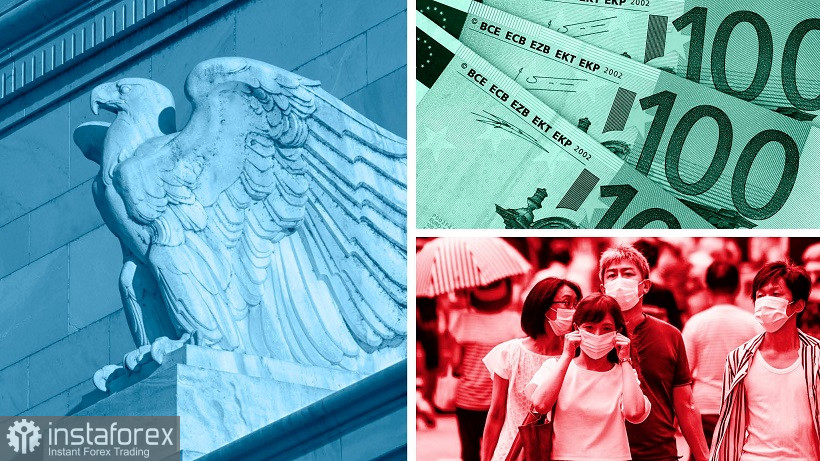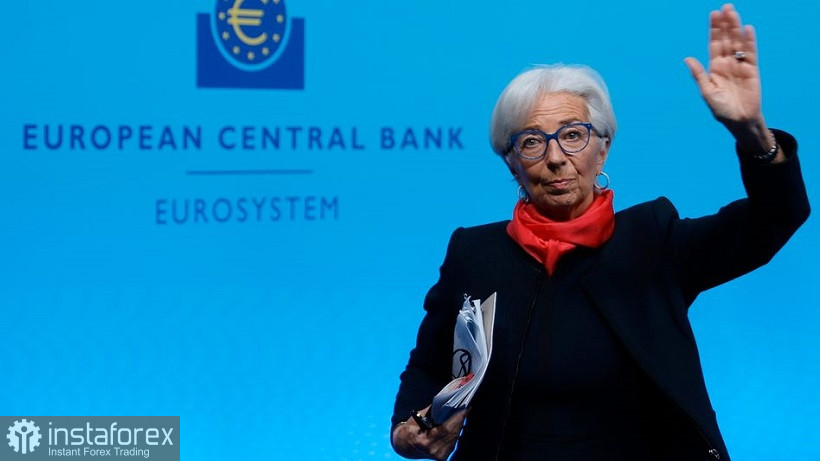The reaction of EUR/USD to recent events is unusual and unnatural. The Federal Reserve did not let the US dollar decline, and the European Central Bank did not support the Euro currency. Therefore, the growth of the EUR/USD pair occurs "despite", and not "due" to circumstances. One can talk for a long time about the reasons for such price dynamics, but the fact remains that the above-mentioned Central banks have done everything possible from them so that EUR/USD is now moving not upwards, but downward. Here, clear questions arise: is it possible in the current conditions to consider longs, designating ambitious targets in the form of 1.1400 or even 1.1500 levels? How stable is the pair's growth structure and what is it based on in general? And lastly, is it possible to talk a priori about a trend reversal amid the tightening of the Fed's monetary policy and the ECB's wait-and-see attitude?

These are not rhetorical questions at all. Judging by the dynamics of the upward movement, which is observed for the third day in a row, the buyers of the pair intend to at least approach the borders of the 1.14 mark. To do this, it is necessary to break through the resistance level of 1.1370 (the upper line of the Bollinger Bands indicator on the D1 timeframe) – it is this target that will become the main one for the upward trend. If the EUR/USD bulls are saved before the breakdown of the resistance level, it will be impractical to talk about higher price values in the context of long-term growth. On the contrary, buyers will open the way to the 1.1400 and 1.1450 marks (the Tenkan-sen line on the W1 timeframe). In other words, longs can be considered only when breaking through the above price barrier, which is an indicative marker.
Still, the question arises – how stable is the pair's growth structure against the background of the announced decisions of the Fed and the ECB? It can be recalled that the Fed decided to curtail the stimulus program ahead of schedule, increasing its pace from $ 15 billion to $30 billion per month. In addition, Jerome Powell actually announced an interest rate increase next year, and the point forecast allows for a double (and triple) increase within 2022.
In turn, the European Central Bank did not get ahead of events at yesterday's meeting, announcing the completion of the Pandemic Emergency Purchase Program (PEPP) in March next year as originally planned. Moreover, the regulator has extended the terms of reinvestment of proceeds from redeemable bonds under this program "at least until the end of 2024." ECB members also decided to strengthen the traditional stimulus program. So, from the second quarter of next year, the European regulator will double the volume of asset repurchases under the APP program from 20 to 40 billion euros per month. In the third quarter, 30 billion euros will be spent on this program every month, and 20 billion starting from October next year and until the need disappears.
According to the European press, "some ECB representatives" expressed their dissatisfaction with the extension of reinvestments under PEPP until 2024 and the fact that the Central Bank did not set a specific deadline for the completion of the APP. But the fact remains that the relevant decision was made by the regulator by a majority vote, which means that "dovish sentiments" still dominate in the ECB camp. As for the fate of the interest rate, Christine Lagarde once again ruled out the option of raising it within the next year.
So, what do we have in the bottom line? On the one hand, there is a rather aggressive behavior of the Fed (early curtailment of QE, a "hawkish" point forecast) and passive-expectant behavior of the ECB (strengthening of the PEPP, an open date for the completion of this program, a wait-and-see position regarding the rate).
A logical question arises: within such fundamental conditions, can the EUR/USD pair afford a large-scale upward offensive in the context of a trend reversal? Abstracting from the causes of the current upward correction, it is necessary to indicate here the fact that this growth is primarily correctional, that is, temporary. The pair can hang out in the flat until the end of the Christmas-New Year or go down, playing back the events of yesterday. However, it is extremely unlikely that the final meetings of the ECB and the Fed can provoke the breakdown of the 1.14 and 1.15 marks.

Here, Omicron is the "dark horse", the attitude to which the market has not yet become settled. On the one hand, this strain is four times more contagious than Delta and is currently spreading exponentially. On the other hand, it is less dangerous (according to preliminary estimates) and still lends itself to the action of vaccines (especially if we are talking about a booster dose). According to WHO representatives, the final verdict on the new strain will be issued only in a few weeks due to the time delay between an increase in the number of cases and an increase in the number of severe cases and deaths.
Summarizing the above, it can be concluded that two options can be considered: either take a wait-and-see position or go into sales on upward surges. As mentioned above, the resistance level is 1.1370 (the upper line of the Bollinger Bands indicator on the daily chart). The nearest support level is 1.1280, which corresponds to the average line of the Bollinger Bands, coinciding with the Tenkan-sen line on the same timeframe.





















